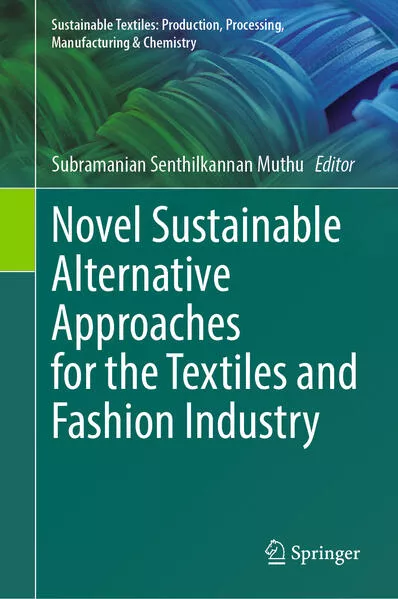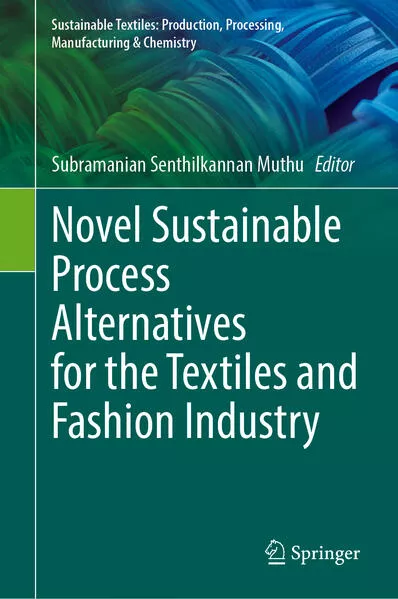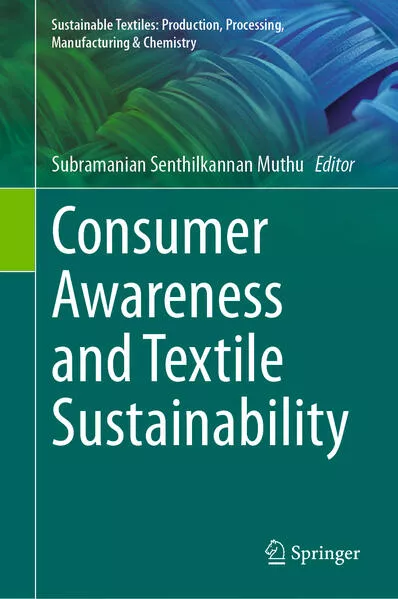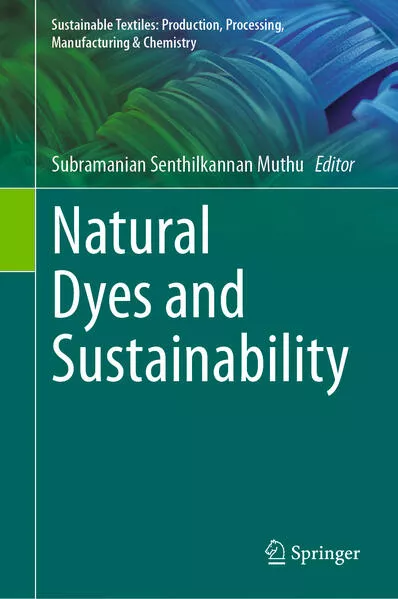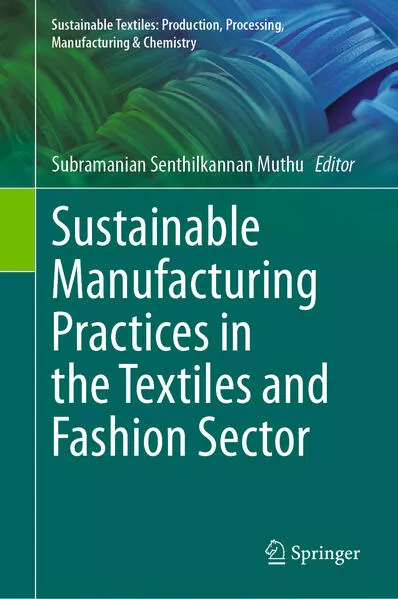Sustainable Textiles: Production, Processing, Manufacturing & Chemistry
Novel Sustainable Process Alternatives for the Textiles and Fashion Industry
Chronologie aller Bände (1 - 6)
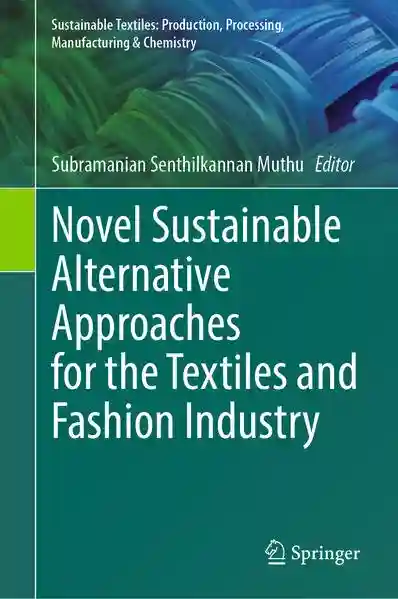
Die Reihenfolge beginnt mit dem Buch "Novel Sustainable Alternative Approaches for the Textiles and Fashion Industry". Wer alle Bücher der Reihe nach lesen möchte, sollte mit diesem Band von Subramanian Senthilkannan Muthu beginnen. Der zweite Teil der Reihe "Novel Sustainable Process Alternatives for the Textiles and Fashion Industry" ist am 26.08.2023 erschienen. Die Reihe umfasst derzeit 6 Bände. Der neueste Band trägt den Titel "Sustainable Manufacturing Practices in the Textiles and Fashion Sector".
- Anzahl der Bewertungen für die gesamte Reihe: 0
- Ø Bewertung der Reihe: 0
- Autor: Muthu, Subramanian Senthilkannan
- Anzahl Bewertungen: 0
- Ø Bewertung:
- Medium: Buch
- Veröffentlicht: 26.08.2023
- Genre: Politik
Novel Sustainable Alternative Approaches for the Textiles and Fashion Industry
Environmental impacts created by the textiles and fashion sector are well known and acknowledged by various stakeholders involved in the entire supply chain. The entire lifecycle of textile products creates various impacts to the environment and hence any attempts to alleviate the impacts are highly welcomed. The whole sector is keen to investigate novel sustainable alternatives in terms of raw materials, processes, approaches to make the entire textiles and fashion sector more sustainable. This broad title of novel sustainable alternatives can be split into three subtopics: novel raw material alternatives, novel process alternative and novel alternative approaches. This volume is dedicated to deal with the novel sustainable alternative approaches for the textiles and fashion industry.
- Autor: Muthu, Subramanian Senthilkannan
- Anzahl Bewertungen: 0
- Ø Bewertung:
- Medium: Buch
- Veröffentlicht: 01.09.2023
- Genre: Politik
Novel Sustainable Raw Material Alternatives for the Textiles and Fashion Industry
Environmental impacts created by the textiles and fashion sector are well known and acknowledged by various stakeholders involved in the entire supply chain. The entire lifecycle of textile products creates various impacts to the environment and hence any attempts to alleviate the impacts are highly welcomed. The whole sector is keen to investigate novel sustainable alternatives in terms of raw materials, processes, approaches to make the entire textiles and fashion sector more sustainable. This broad title of novel sustainable alternatives can be split into three subtopics: novel raw material alternatives, novel process alternative and novel alternative approaches. This volume is dedicated to dealing with novel sustainable raw material alternatives for the textiles and fashion industry.
- Autor: Muthu, Subramanian Senthilkannan
- Anzahl Bewertungen: 0
- Ø Bewertung:
- Medium: Buch
- Veröffentlicht: 30.09.2023
- Genre: Politik
Novel Sustainable Process Alternatives for the Textiles and Fashion Industry
Environmental impacts created by the textiles and fashion sector are well known and acknowledged by various stakeholders involved in the entire supply chain. The lifecycle of textile products creates various impacts to the environment and any attempts to alleviate them are highly welcomed. The whole sector is keen to investigate novel sustainable alternatives in terms of raw materials, processes, approaches to make the entire textiles and fashion sector more sustainable. This broad category of novel sustainable alternatives can be split into three subtopics: novel raw material alternatives, novel process alternative and novel alternative approaches. This volume provides cases describing novel sustainable process alternatives for the textiles and fashion industry.
- Autor: Muthu, Subramanian Senthilkannan
- Anzahl Bewertungen: 0
- Ø Bewertung:
- Medium: Buch
- Veröffentlicht: 28.11.2023
- Genre: Politik
Consumer Awareness and Textile Sustainability
This contributed volume discusses how consumer awareness of textile sustainability can lead to a more sustainable textile supply chain. From the initial purchase of a textile to its care and longevity, consumer behaviors are at the core of consumption associated with the textile industry. Making consumers aware of the environmental impacts of the clothing products they buy help them to choose the best alternative which has the lowers footprints and also enable them to help the entire textile sector to become sustainable. In addition, making them aware of environmental footprints of textile products from cradle to grave, make them aware of how best they can take care of their products during use and disposal phases and how they can help to preserve the planet with their earnest efforts to reduce the environmental impacts in their boundary, i.e. the use and disposal phases.
- Autor: Muthu, Subramanian Senthilkannan
- Anzahl Bewertungen: 0
- Ø Bewertung:
- Medium: Buch
- Veröffentlicht: 24.01.2024
- Genre: Politik
Natural Dyes and Sustainability
Natural dyes offer a time-tested and generally more sustainable alternative to synthetic dyes in the textile industry. The issues surrounding synthetic dyes are well-known, and in the literature it is generally accepted that natural dyes have a smaller environmental impact. However, even natural dyes have issues that must be dealt with in order to ensure sustainability in the industry. For example, the mordants needed to improve the dyeing process may release hazardous heavy metal pollutants when used. This book is dedicated to exploring cases such as this that illustrate the benefits and drawbacks to natural dyes and steps that must be taken for their sustainable use in the textile industry.
- Autor: Muthu, Subramanian Senthilkannan
- Anzahl Bewertungen: 0
- Ø Bewertung:
- Medium: Buch
- Veröffentlicht: 14.02.2024
- Genre: Politik
Sustainable Manufacturing Practices in the Textiles and Fashion Sector
Environmental impacts created by the entire textile and fashion supply chain have been an important topic of discussion in recent decades. Different life cycle phases of a textile product from raw material extraction through manufacturing to consumer use and disposal are all responsible for various magnitudes of environmental impact. Mitigating the environmental impacts created by the textile manufacturing sector is of paramount import as manufacturing is a critical point to alleviate the impacts arising from the entire textiles and clothing supply chain. This contributed volume is meant to illustrate and draw useful conclusions from initiatives taken by the textile manufacturing sector and to identify key practices invented and being practiced by textiles and clothing manufacturers toward making the industry more sustainable.
